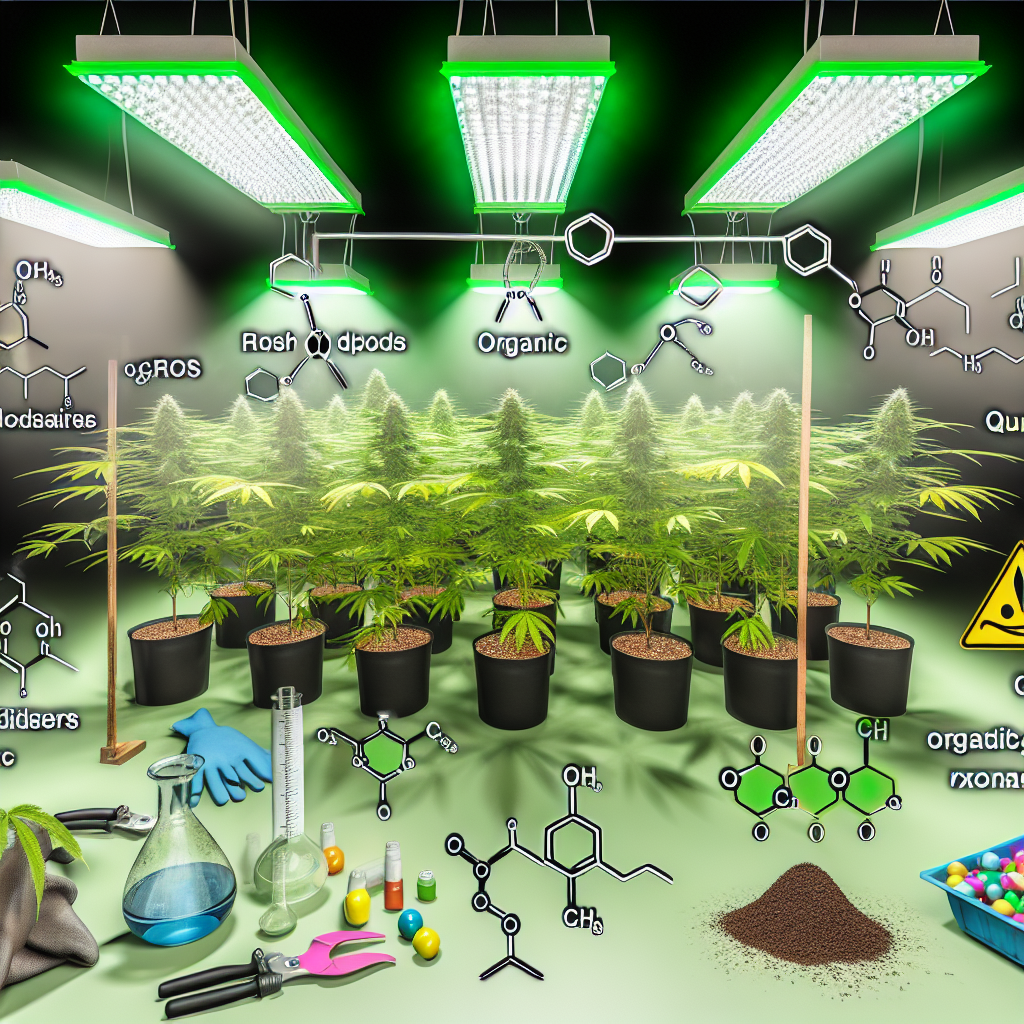# Terpene Enhancement Methods: DIY Cannabis Flavor Boosting Techniques
Terpene Enhancement Methods: DIY Cannabis Flavor Boosting Techniques
Introduction
Terpenes are the aromatic compounds found in cannabis that not only give strains their distinct scents and flavors but also play a vital role in the entourage effect — the synergistic interaction between cannabinoids and other plant compounds that can enhance therapeutic benefits. As the cannabis industry continues to blossom, both recreational users and medical patients have begun to appreciate the nuanced combination that terpenes contribute to the cannabis experience. Whether you’re enjoying a citrusy hit from a limonene-rich sativa or relaxing with a myrcene-forward indica, flavor and aroma have become just as important as THC content when choosing a strain.
In recent years, there’s been a growing movement toward terpene preservation and enhancement, driven by the demand for fresh, flavorful, and high-potency cannabis. While commercial growers use controlled environments and nutrient optimization to boost terpene profiles, DIY methods are now a hot topic for home growers and cannabis enthusiasts looking to take their experience to the next level.
Flavor degradation often occurs due to improper curing, aging, or storage. Oxidation, UV light exposure, and poor humidity control can diminish terpene presence, leading to stale and flavorless buds. But fret not—cutting-edge, yet accessible techniques now allow users to restore or even enhance the terpene profiles of their cannabis at home.
From natural methods like fruit peel humidity packs to vapor infusion with essential oils, and advanced tactics using botanical and laboratory-derived terpenes, there are a myriad of ways to enrich your cannabis with desirable flavor and aromatic profiles. These DIY undertakings not only elevate the sensory experience but may also potentiate therapeutic benefits associated with individual terpenes.
As research expands into the medical implications of terpenes, it becomes even more critical for consumers and professionals alike to understand how they function, how they interact with cannabinoids, and how to preserve and enhance them effectively. Below is a detailed look at current terpene enhancement methods that can be employed at home or in a small scale—helping to bridge the gap between science, cannabis culture, and personal experience.
Uncovering the Science: Why Terpenes Matter in Cannabis
Research into terpenes goes far beyond just sniffing out pleasant aromas. These compounds have proven therapeutic potential and a substantial role in the medicinal benefits of cannabis. According to a study published in the journal _Frontiers in Neurology_, terpenes such as linalool, limonene, and beta-caryophyllene exhibit anti-inflammatory, anxiolytic, and neuroprotective effects, especially when combined with cannabinoids—a hallmark of the entourage effect (Russo, 2011).
Beta-caryophyllene, for instance, interacts directly with the body’s CB2 receptors, demonstrating potential for managing pain and inflammation without the psychoactive effects of THC. Myrcene has muscle-relaxant properties and enhances cell permeability, potentially boosting cannabinoid uptake. Alpha-pinene shows cognitive enhancement and bronchodilator effects, and limonene is noted for its mood-lifting and anti-anxiety properties (Booth & Bohlmann, 2019).
These findings have led to increased attention in cultivating techniques that optimize terpene production. Yet, even after harvest, steps taken by users—like proper storage and external terpene boosting—can contribute to these benefits. A study by the University of Mississippi noted that terpenes begin to evaporate and degrade shortly after curing if cannabis isn’t stored under ideal conditions (dark, cool, and airtight environments) (ElSohly et al., 2017).
More recently, researchers have begun testing terpene reintroduction as a viable method to improve the efficacy of cannabis concentrates and flower. In regulated markets, companies are now experimenting with adding back strain-specific or botanical-derived terpenes to dried flower to mimic a freshly harvested profile—an approach that has found wide consumer approval and is now being mimicked by DIY enthusiasts at home.
Understanding the interplay between terpene concentration and therapeutic efficacy creates new opportunities for patients and caregivers. Tailoring strains by enhancing specific terpene content could soon become part of personalized medicine protocols in medical marijuana programs.
DIY Terpene Enhancement: Easy, Effective Methods You Can Do at Home
Boosting terpenes at home doesn’t require a chemistry degree. Here are several effective and accessible methods:
1. Freshen Up with Fruit Peel Humidity Packs
Using citrus or mango peels in tightly sealed containers with cannabis can enhance terpene content naturally. The rinds emit limonene and myrcene, which subtly absorb into nearby buds. While this method should be approached carefully to avoid mold, it can refresh older flower and intensify flavor.
2. Upgrade Your Weed with Terpene Drops and Botanical Infusions
Botanical-derived terpene blends are available as concentrated drops. These can be directly introduced to cannabis jars by placing a drop on a cotton swab or absorbent pad. Lengthy exposure infuses the weed with distinct flavor enhancements. Essential oil diffusers can also be used alongside stored cannabis to introduce vapor-based infusion.
3. Real-Time Boost with Terpeneable Dry Herb Vaporizers
Some portable vaporizers allow for terpene cartridges or aromatic boosters to be inserted. As the cannabis heats, it mixes with the terpenes, creating a richer sensory effect during inhalation. This is ideal for those looking to experiment with entourage effects in real time.
4. Herbal Blending: Spice Up Your Smoke with Aromatic Additives
Blends of dried herbs such as lavender (linalool), rosemary (pinene), and chamomile (bisabolol) can be mixed with cannabis to enhance the terpene profile during combustion or vaporization. This technique adds both aroma and potential therapeutic synergy with the native cannabinoids.
5. Preserve Terpenes with Curing and Climate Control
While not a direct infusion, optimizing post-harvest curing with glass jars, dark storage, and 62% humidity packs will help retain native terpene expression. Some enthusiasts go further to cold-cure their harvest in low temperatures to preserve volatile compounds.
Final Thoughts: The Future of Terpene Customization Starts at Home
Terpenes provide more than flavor—they intricately influence cannabis’s effects and therapeutic potential. Whether you’re a home grower, concentrate aficionado, or flavorful flower enthusiast, experimenting with terpene enhancement adds a layer of customization and enjoyment that goes beyond just THC. As cannabis science continues to evolve, mastering the art of terpene boosting could become a key aspect of individualized consumption.
References
– Russo, E. B. (2011). Taming THC: potential cannabis synergy and phytocannabinoid-terpenoid entourage effects. _British Journal of Pharmacology_. https://www.ncbi.nlm.nih.gov/pmc/articles/PMC3165946/
– Booth, J. K., & Bohlmann, J. (2019). Terpenes in Cannabis sativa – From plant genome to humans. _Plant Science_. https://www.ncbi.nlm.nih.gov/pmc/articles/PMC5871218/
– ElSohly, M. A., Radwan, M. M., Gul, W., Chandra, S., & Galal, A. (2017). Phytochemistry of Cannabis sativa L. _Progress in the Chemistry of Organic Natural Products_. https://pubmed.ncbi.nlm.nih.gov/29120217/
Concise Summary
Terpenes are the aromatic compounds in cannabis that influence its effects and therapeutic potential. This article explores the science behind terpenes and provides readers with easy, effective DIY methods to enhance the terpene profiles of their cannabis, including using fruit peels, terpene drops, herbal blends, and more. As research into terpenes continues to expand, understanding and customizing terpene content could become a key aspect of personalized cannabis consumption.




